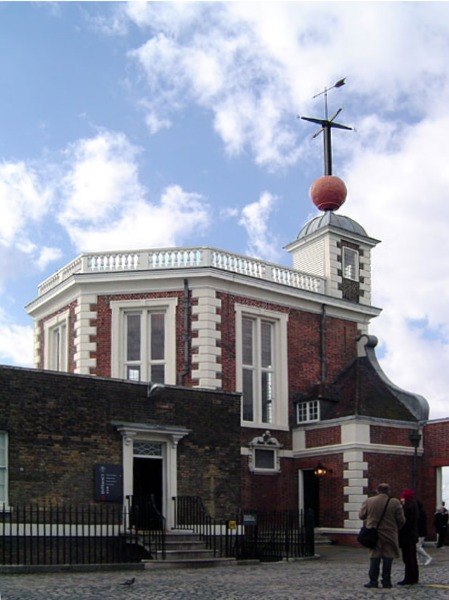Greenwich Mean Time (GMT) is the local mean time at the Royal Observatory in Greenwich, London, counted from midnight. At different times in the past, it has been calculated in different ways, including being calculated from noon; as a consequence, it cannot be used to specify a particular time unless a context is given. The term GMT is also used as one of the names for the time zone UTC+00:00 and, in UK law, is the basis for civil time in the United Kingdom.
The Shepherd Gate Clock at the gates of the Royal Observatory, Greenwich is permanently kept on Greenwich Mean Time.
Clock in Kumasi, Ghana, set to GMT
Royal Observatory, Greenwich
The Royal Observatory, Greenwich is an observatory situated on a hill in Greenwich Park in south east London, overlooking the River Thames to the north. It played a major role in the history of astronomy and navigation, and because the Prime Meridian passed through it, it gave its name to Greenwich Mean Time, the precursor to today's Coordinated Universal Time (UTC). The ROG has the IAU observatory code of 000, the first in the list. ROG, the National Maritime Museum, the Queen's House and the clipper ship Cutty Sark are collectively designated Royal Museums Greenwich.
Royal Observatory, Greenwich. A time ball sits atop the Octagon Room.
The Airy Transit Circle, used for over a century (1851–1953) as the reference point when charting the heavens and determining times, thus earning for it the epithet "the centre of time and space"
The building housing the origin of the Greenwich Prime Meridian, marked by the brass strip in the foreground. The apex of the roof opens up above the white vertical strips (joints in the eaves are visible) to allow telescopic star sightings to be made.
The Shepherd Gate Clock at the gates of the Royal Greenwich Observatory. This clock shows Greenwich Mean Time all year round, ie. it is not set to British Summer Time in the summer.






